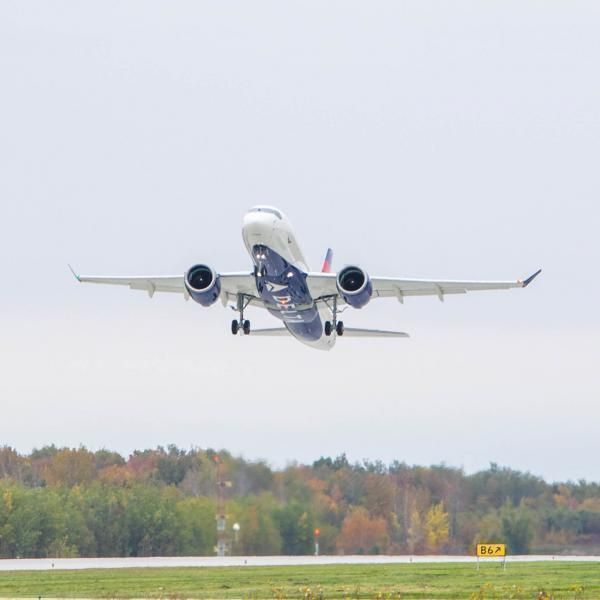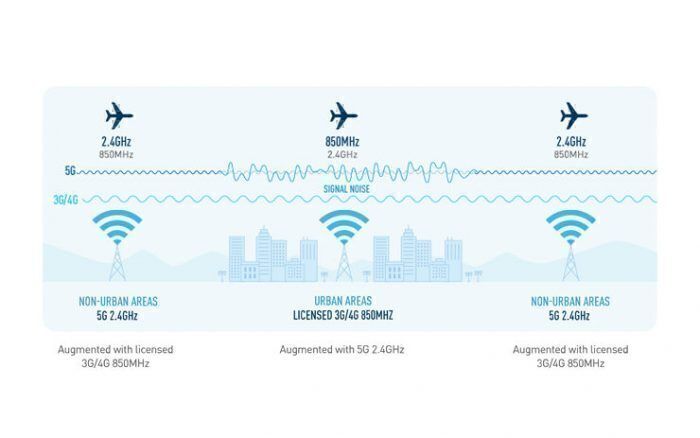In an age where we take internet connectivity for granted, we thought we would take a look at why most aircraft do not offer free WiFi.
It wasn’t all that long ago that boarding a commercial airliner meant cutting yourself off from the outside world communications wise, but now more and more airlines are offering WiFi.
For most people this is great, but for others, flying is a sacred time where you can escape from the everyday routine of checking email or reading the latest Trump tirade on Twitter.
Getting the Internet while flying is complicated
These days we have WiFi hotspots nearly everywhere we go; in bars, restaurants, office buildings and even on public transportation. Delivering the Internet to passengers on airplanes cruising at 35,000 feet is another matter altogether, and one which requires expensive equipment.
About ten years ago, when airline passengers first got access to the world-wide-web it was exclusively linked to satellite-based systems. The very same satellites that are used to broadcast television and provide meteorologists with weather information were now able to offer internet connectivity to aircraft.
The way it works is that the aircraft connects to the satellite from an antenna on the top of the fuselage and the satellite then communicates between the ground and the plane. Back then, the technology wasn’t really up to the job of allowing you to surf the web or stream a movie. The best you could expect was somewhat slow access to your email.
Ground-based systems only work when flying over land
Then along came a ground-based system that worked similar to how communication works using a mobile telephone. Now, rather than placing an antenna on the top of the fuselage, it is placed underneath the aircraft to receive a signal from towers on the ground.
With the aircraft traveling at high speeds, the towers that provide the connection are always changing as the plane continuously connects to the nearest tower so as not to interrupt connectivity.
What this is in effect doing is making the entire aircraft a WiFi hotspot with a router onboard that distributes the Internet connection to the passengers. This now allows passengers to not only check their email but with 3G connectivity, they can do most things they take for granted doing while going about their everyday lives on the ground.
The only problem with connecting to the Internet this way is that it is only possible when flying over land. It doesn't provide coverage over the vast oceans that cover 70% of our planet. What this means is that passengers flying internationally often still need to use satellites to connect to the Internet. The good news here is that as technology has gotten better and so have the satellites.
Having said that, it depends on where you are flying with some regions of the earth much better than others.
Some people like not having the Internet when flying
For some, this almost uninterrupted ability to connect to the Internet is a good thing, while others are not so keen on it.
They would argue that flying on a commercial airliner was the only tech-free space available in the modern world and liked the fact that they could switch off from work, the news and the outside world while flying.
These days, nearly all airlines offer WiFi, yet people complain that it is too slow. The fact that it is slower than your internet connection on the ground is due to it being super expensive for airlines to equip the planes with the technology needed for faster bandwidth.
Airlines do not replace their inflight WiFi systems for the latest and greatest new system as soon as it comes out. What this means is that airlines only upgrade their systems every so often and cannot keep up with the demand from passengers.
When you ask why airlines make you pay for internet connectivity the first answer is because they can and the second answer is because they want to get back the money it costs them not only for the system but for the provider they use to connect.
And while these two things seem quite logical, that antenna they have on the fuselage also causes drag which equates to more fuel costs. Then, of course, there is the maintenance of the equipment to keep it all working for your enjoyment.
Delta Air Lines Chief Executive Officer Ed Bastian talked about why his airline did not offer free WiFi while at the Economic Club of Washington and was quoted by travelpulse.com as saying:
“One of the reasons why I say it’s ‘not a good reason’ why we charge for internet — you don’t pay for internet practically anywhere else — is that the planes do not have the technical capacity, and capability yet that if we made it free the system would crash,” Bastian said. “So, once it gets above about a 10% take-rate onboard performance starts to erode… if you turned it on free.”
I am a supporter of free internet for all and can see no reason why all airlines do not offer free Internet to their passengers.
Eventually, I think that airlines will be forced to do this as technology allows all passengers to have access to high-speed internet while flying.
For all the latest news on inflight connectivity visit getconnected and see what the future holds for inflight entertainment and the Internet.



